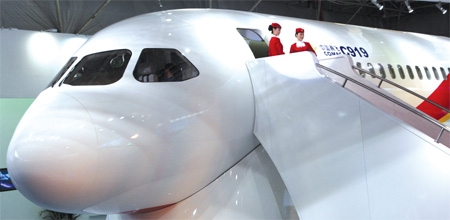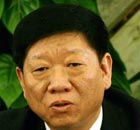How China's west will be won
Updated: 2010-08-26 09:19
By Dan Steinbock (China Daily)
In the beginning of the "Go West" program, the largest proportion of the west's total fixed asset investment was in infrastructure. And almost half of China's huge stimulus of $586 billion was earmarked for transportation, infrastructure and power grids, which facilitate the exploitation of minerals, natural gas and oil in China's west.
In addition to the stimulation of domestic demand, the government's strategy is to "cultivate areas of high consumer demand and expand consumption in new areas". At present, retail sales are strongest in East China, but retail sales growth is stronger in the non-coastal areas. China's west is about to experience a revolution in durable consumer goods - from color TV sets to refrigerators.
Since spring, Guangdong's factories have witnessed extensive labor unrests and high increase in salaries. Coupled with preferential tax treatment and other incentives, cost advantage is migrating to the China's inland and western areas. These, in turn, are driving up relocations of domestic and foreign companies to cities such as Wuhan in Hubei province, or Chongqing municipality.
With lower wages, science and hi-tech parks in municipal economic zones (for example, in Chengdu, Chongqing, and Xi'an), some inland provinces are even trying to leapfrog the stage of cheap manufacturing, by moving directly into higher value-added segments.
Recently, many inland provinces have seen their FDI inflows increase at much higher rates. The government's FDI promotion focuses on regional "competitive industries" that attract FDI to serve specific needs. For example, Sichuan's FDI doubled in 2008, not least because of investments in test and research laboratories by multinational giants such as Cisco, Ericsson, Microsoft, Nokia, SAP and Siemens.
Since China's capital market is not yet to be fully developed, reliance on banks as the main source of funds is high. While the coastal region has a strong lead with its share of total loans and deposits, the west is beginning a long catch up.
As costs have risen in China, it has lost some labor to Bangladesh, Vietnam and Cambodia, primarily for cheaper, labor-intensive goods, including textiles, simple electronics and toys.
Yet China's west offers many of the comparable benefits and an emerging infrastructure. Indeed, the shift of the growth momentum to the west is vital to China's sustained growth and internal cohesion.
Economic growth remains a necessity but it is no longer enough. With "comprehensive development", the focus is increasingly on social balance and harmony.
But it is the rise of the west that holds the potential for China's sustained growth in the next decade or two.
The author is research director of International Business at the India, China and America Institute, an independent think tank in the US.
Paper's Digest

Chinese jet takes on Big 2
First large commercial plane set to ride on demand for aircraft as economy grows.
Super-CPU only for domestic eyes
Specials

Gaining ground
Doing business in china for westerners has come a long way, Peter batey says.

Safeguarding environment a priority
China continues to face mounting pressure to curb environmental degradation, despite progress in reducing pollution over the last five years, the environmental protection minister warned.

Employment to remain a continuing challenge
China's top labor official said the country will face a tough employment situation in the next five years.
